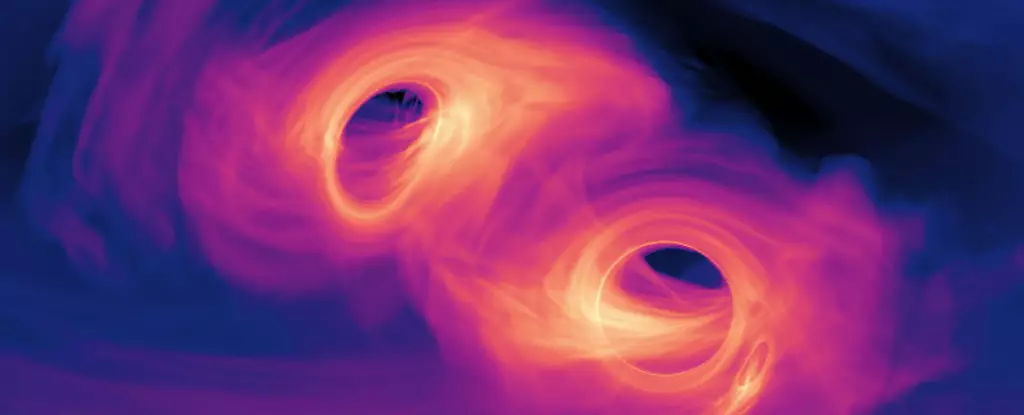One of the most fascinating concepts in astrophysics is the idea of Hawking Radiation, proposed by Stephen Hawking in the 1970s. This theory suggests that black holes can emit radiation and eventually evaporate over immensely long periods of time. Despite the theoretical basis for this phenomenon, scientists have yet to reliably observe Hawking Radiation directly.
New Research on Black Hole Mergers
Recently, a group of European researchers published a paper titled “Measuring Hawking Radiation from Black Hole Morsels in Astrophysical Black Hole Mergers” where they propose a new method to detect Hawking Radiation. The researchers suggest that during black hole mergers, smaller black holes, referred to as “morsels,” could be created and ejected into space. These morsels, similar in size to asteroids, may emit Hawking Radiation in the form of gamma-ray bursts that can be detected by telescopes.
Detecting Hawking Radiation
The researchers believe that the gamma-ray bursts produced by the evaporation of these morsel black holes could provide a unique “fingerprint” that distinguishes them from other sources of radiation. By using atmospheric Cherenkov telescopes like the High-Altitude Water Cherenkov (HAWC) Gamma-ray observatory, scientists may be able to observe these high-energy photons in the range of 100 GeV to 100 TeV.
However, there are still many challenges associated with detecting Hawking Radiation from black hole morsels. The researchers acknowledge that factors such as the intense gravitational environment of a black hole merger or the relativistic velocities of the emitted morsels could alter the spectra of the observed gamma-ray bursts. Additionally, there may be unknown physics at play that could further complicate the observation of Hawking Radiation.
The detection of Hawking Radiation from morsel black holes could provide valuable insights into particle physics beyond the capabilities of current collider experiments. The authors of the research paper suggest that these morsel black holes, if created in the early Universe and still existing today, could potentially constitute dark matter. This opens up new possibilities for understanding the origins of dark matter and exploring new physics principles such as supersymmetry or extra dimensions.
The study of Hawking Radiation from black hole morsels presents an exciting opportunity for astrophysicists to delve into the mysteries of the Universe. By detecting these gamma-ray bursts and analyzing their unique characteristics, scientists may uncover new insights into the nature of black holes, particle physics, and potentially dark matter. While challenges remain in observing these phenomena, the potential rewards of expanding our understanding of the cosmos make this research endeavor worthwhile.


Leave a Reply